Ash and the nuances of its cultivation
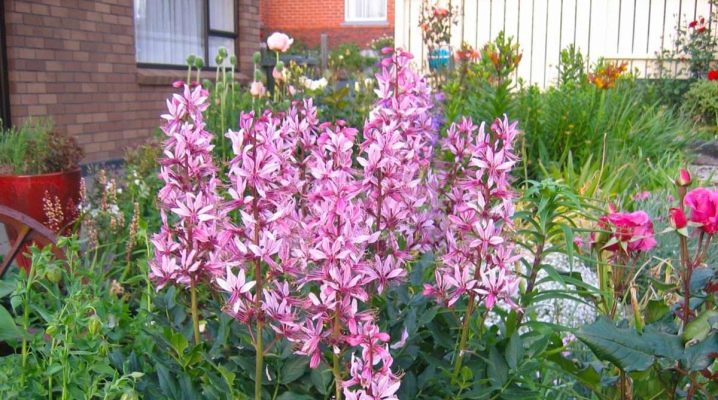
The ash tree got its name from the foliage resemblance to the leaves of an ordinary ash tree. The nuances of its cultivation depend on the species: white, narrow-leaved, bushy. It has been used in ornamental gardening for many centuries. It is appreciated for decorativeness, unpretentiousness in cultivation, a delicious smell reminiscent of lemon, long and abundant flowering.
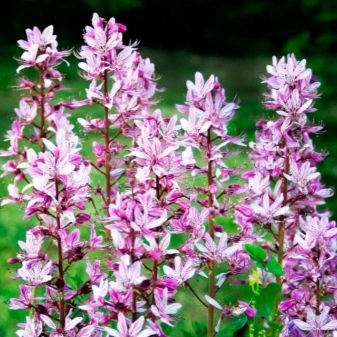
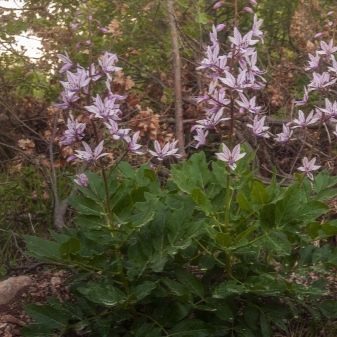
What does it look like and where does it grow?
Ash tree is found in a variety of distribution areas - from European territory to the Caucasus and southern Siberia. The oligotypic genus of plants is classified as rutic, to which citrus fruits also belong. This is a herbaceous perennial, the leaves of which in Siberia were used in field conditions instead of tea. In folk medicine, it was used as a medicine (different parts, even rhizomes). Nowadays it is mainly appreciated as a garden ornamental plant.
It got its second name - the burning bush - for the abundance of essential oils produced. In summer, in dry hot weather, you can set fire to a plant that will flare up from a match, but will not suffer from combustion.
Another feature of the plant is that during the flowering period, from contact with it, a person can get burns, which will swell with bubbles in a day. They say that an exotic flower can only burn in the heat, with insufficient moisture, which is probably due to the intensity of metabolism.
The description of a beautiful perennial always contains a mention that it is poisonous. Ash is toxic and can flare up in a matter of seconds. However, none of this will happen if you do not tear it with your bare hands and light matches in the immediate vicinity - then the owners will not face any consequences. In the practice of ornamental floriculture and the cultivation of domestic plants, you can list many really poisonous crops that are valued for their amazing picturesqueness, the ability to decorate any flower garden.
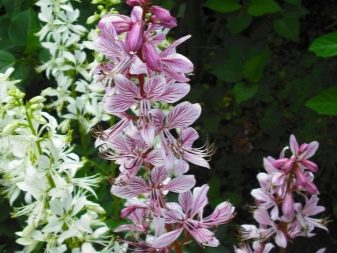

Diktamnus is the name of a small genus in the Rutaceae family, transferred to any species of ash. The etymology of this name is associated with the Latin expression, literally meaning - a small bush on the mountain of Crete. In the Caucasus, it is called a wild star anise for its fruits, which open in the shape of a symmetrical asterisk.
In Crimea, there are stands on tourist trails with warnings for travelers that the delicate and unearthly beauty with a subtle citrus scent is dangerous and threatens with burns, which will be difficult to heal in hiking conditions.
In Russia, ash is found in the south of the European part, in the Caucasus, at the southern tip of Siberia, up to the Amur region. It grows in the foothills, on rocky slopes, calcareous soils, not far from thickets of bushes. Natural diversity allows us to highlight only some common features. These include leaves resembling ash foliage, flowers with five petals, which are usually collected in cluster inflorescences, a fruit-box with five nests, in which black shiny seeds are found.
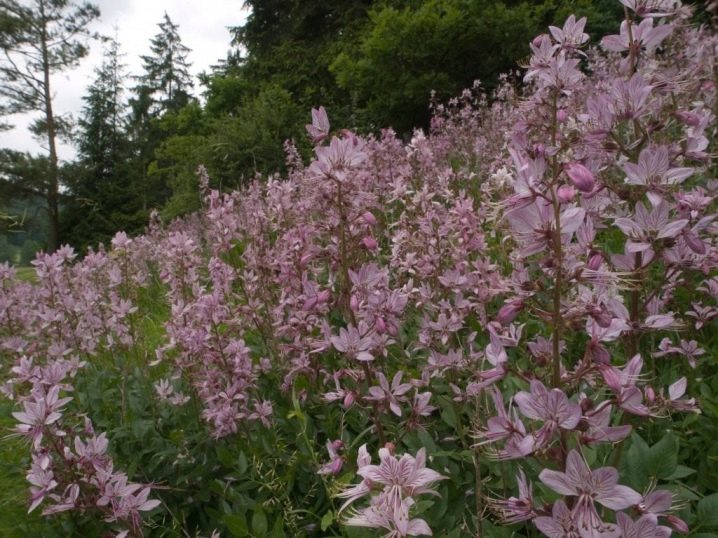
Views
A herbaceous perennial rarely grows beyond a meter height. It has a powerful and branched rhizome, erect shoots and incredibly beautiful flowers, especially spectacular against the background of dark green pinnate leaves.
The hollow-columnar ash tree, with beautiful pink flowers dotted with purple veins, is unusually spectacular in appearance. It is this species that deserves the name Burning Bush because of the glandular hairs with which it is covered. They release essential oils in abundance, which can ignite in hot weather.
The previously existing division into 6 different types has now been abolished, all of them are simply called dictamnus or ash. These species are now combined white, Caucasian, fluffy (bushy), holoscopic and narrow-leaved. All these are synonyms of dictamnus, despite the species differences.
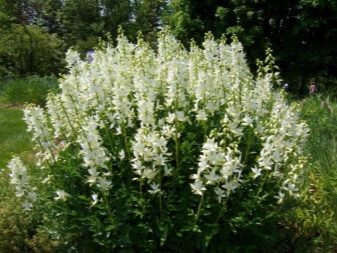
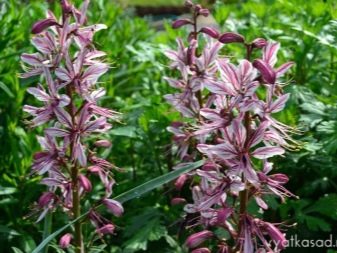
Each of the six previously distinguished species is unique and deserves at least a brief description. However, there is also an external similarity:
- a perennial herb that resembles a shrub;
- racemose inflorescences of different lengths, maximum - up to 20 cm;
- flowers up to 2.5 cm in diameter, there are red, dark red, almost burgundy, pink, white, with graceful yellow or light green stamens;
- seeds are black, in a star-shaped box;
- a garden flower may smell like lemon, dried orange peel, but there are also flowerless forms that resemble magnolias in the structure of the stem, they are suitable for those who do not like the peculiar smell;
- Crimean ash tree differs from its counterparts in growth of 70 cm and pale lilac or pink flowers.

The decision of scientists to combine all 6 previously differentiated species into one called white ash did not lead to clarity in the diversity of the plant. Experienced gardeners and landscape designers say that the same variety in propagated bushes can differ in the number and color of the veins on the bushes, the size of the brushes, and the shades of lush and picturesque flowers.
This is what makes the ash tree a grateful material for creating landscapes, flower beds and flower beds, especially if it is skillfully combined with other ornamental plants.
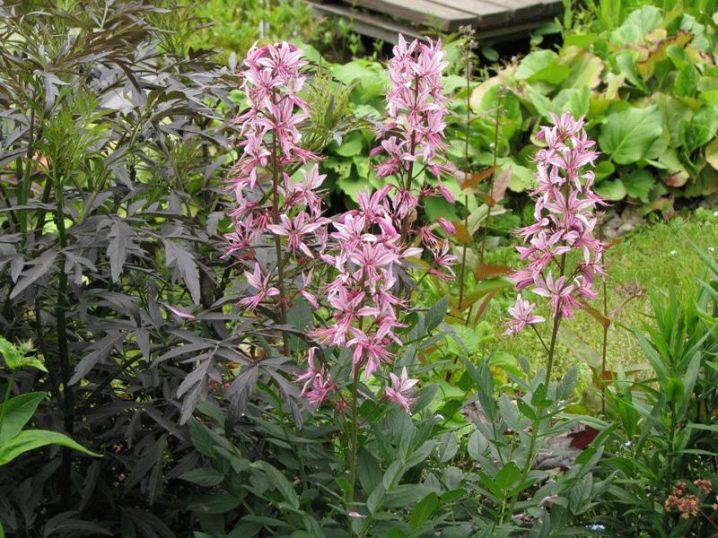
White
Some confusion in terminology introduced by modern fusion of species can lead to misunderstandings when an ash tree with multi-colored brushes is called white. Actually white, with a powerful rhizome, grows up to a meter in height, with dark green, fleecy, pinnate leaves and a stem, fleecy at the top, and bare at the bottom. It blooms for two summer months with beautiful large white clusters with a delicate and delicate aroma. Garden forms are the fruit of the work of breeders.
There are also those varieties that bloom in delicate pink, lilac pink and even bright red flowers.
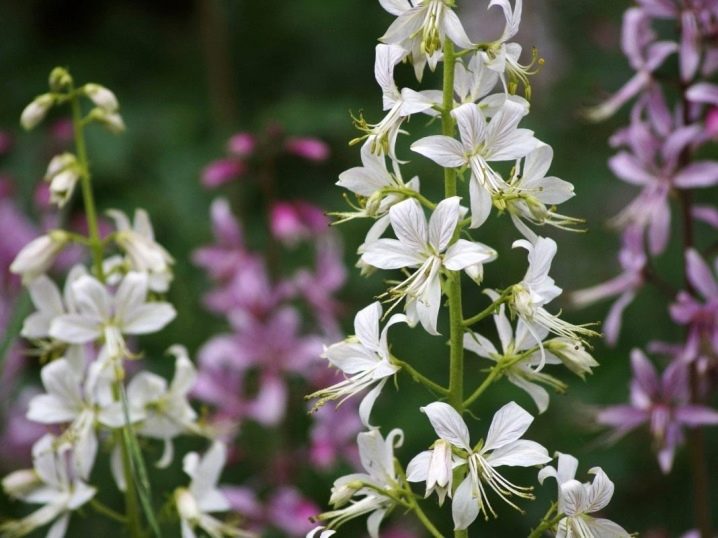
Narrow-leaved
Also a type of herbaceous perennial. Previously identified as a separate variety, and now referred to as synonymous with white ash. Although it has its own characteristic features, which gave rise to the selection of a species called narrow-leaved ash:
- its stem is almost smooth;
- height from 50 cm (meter in rare cases);
- inflorescence can be racemose or paniculate racemose;
- lilac and pink petals are longer than usual, can be rounded or pointed outlines, lanceolate or oblong.
The difference between the seeds, which are longer than usual, was also pointed out, and the taxonomic position was considered in detail. There are differences in the area of growth of the narrow-leaved - it is found in the wild only in the Altai Territory and Central Asia, and only in limited places, in the shrub thickets of the mountains, more precisely, in their middle belt.
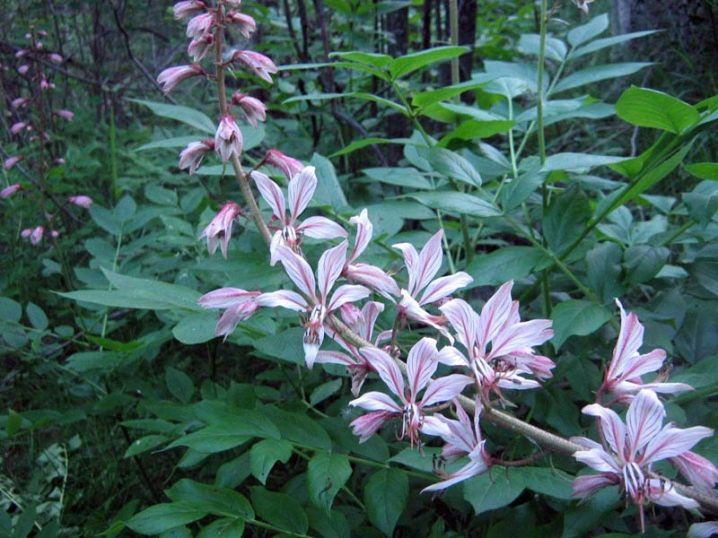
Mohnatoplodny
It belongs to the Rutaceae family, the genus Ash, according to modern concepts, is also a synonym for white, but upon closer examination there are quite significant differences. They can be seen in the form of bracts (mainly acute or linear-lanceolate), the shape and number of leaflets, also of a variable shape. Lilac flower petals can be oblong or sharp. It grows in the Far East, Mongolia and China.
This species can be found in Korea and the Russian Primorye. Growing conditions are similar - stony slopes, calcareous soils, shrub thickets.
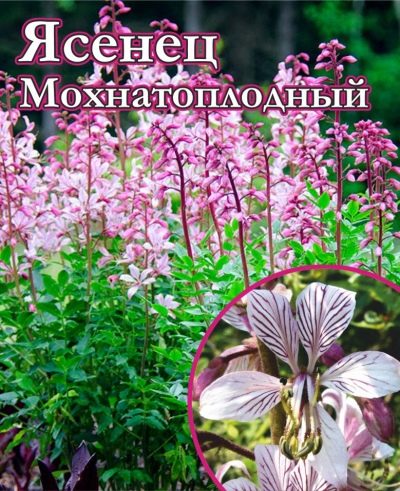
Landing
An ornamental plant can be planted in spring or before winter.For the landing procedure, choose cool days with significant clouds. In hot weather, this is not worth doing, because the plant does not take root after that.
For planting, standard holes are made, but watering is needed only after the seeds or seedlings are placed in the ground. Then the plant needs to be constantly watered until it is found that the ash tree has taken root and began to grow. After that, the amount of water should be reduced, otherwise there is a risk of decay of the root system.
An ash tree is planted at some distance from the rest of the plants so that the shrub forms freely and does not experience discomfort.
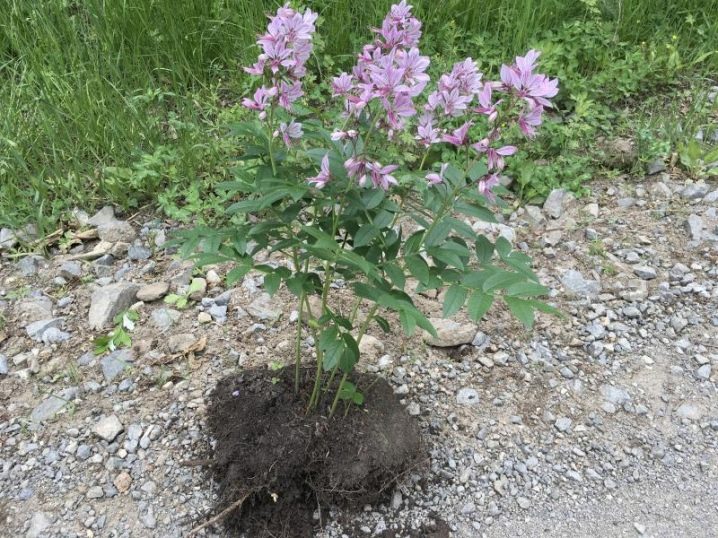
Care
The cultivation of this spectacular element of landscape design does not require special efforts from the owner of the site. Once a year, preferably in early spring, it will be necessary to apply an alkalizing fertilizer, otherwise the ash tree does without standard fertilizing. It belongs to drought-resistant plants, even in the heat you can do without watering, but water will certainly be needed during the budding period and the appearance of brushes, if the florist wants to get abundant, long-lasting and spectacular flowering.
After mulching, you can do without even the usual loosening of the soil. In the open field, in a decorative flower bed, in an ensemble with other decorative crops, pruning will certainly be required. It can be practiced at any time, but it is better to do it during the usual periods - late autumn or early spring. Wintering takes place without problems, the perennial perfectly tolerates the cold, and in the spring it again pleases the owner with the rapid growth of greenery.

Reproduction
The ash can be easily propagated in three standard ways, all of them are quite successful, and no one gives strong recommendations for any of them.
- The seeds are planted in the soil immediately after they are harvested from the compartments of the star fruit. First, a row is planted for seedlings, before winter. In the spring, the plants are thinned out and planted, some of them will need another year, and flowering in any case will only be in two years, on the third.
- The bush is divided in spring or autumn, taking all precautions (gloves, clothes with long sleeves). This is done in cloudy weather, while the bush is divided into large parts. Watering after planting should be generous enough until the plant is settled.
- Cutting is a wonderful way familiar to every florist. To do this, young shoots are cut from the plant, which, for greater reliability, are treated with growth stimulants.
The testimonials of florists indicate that adherence to the reproduction terms and instructions invariably leads to a successful result. The ash plant takes root well and does not bring unpleasant moments to its owner. This is quite understandable if we recall its natural immunity and natural living conditions.
Cuttings can be attended to during the pruning of the shrub.
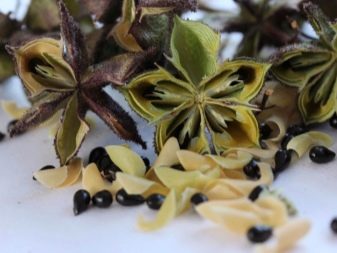
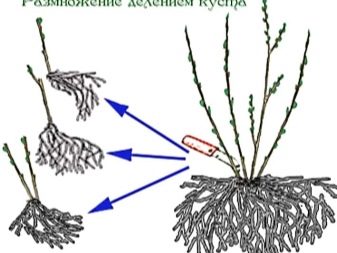
Diseases and pests
The death of an ash tree from this scourge, the subject of constant care of the florist, practically does not occur. It can be ruined by improper planting or excessive care, but insect attacks or diseases in this exotic flower are practically not recorded.
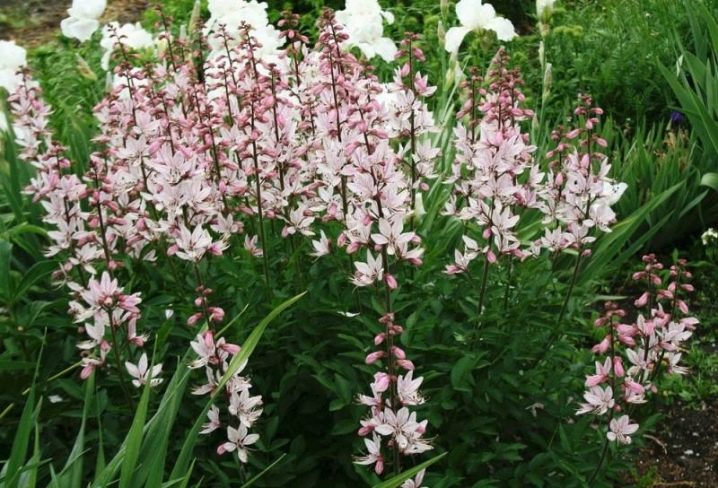
Application in landscape design
Leaves a huge scope for creativity and imagination of the home decorator and designer. It looks unusually spectacular in rockeries, on alpine slides, terraced and round flower beds (as an apogee-top or border-framing). It is used in the creation of cascades with gradual flowering. It is planted in large tubs on terraces or used as a scenic backdrop for dwarf and ground cover plants.
On vast land holdings, the plant is used in plantings that create a wilderness effect. It is grown near water bodies and Japanese gardens.
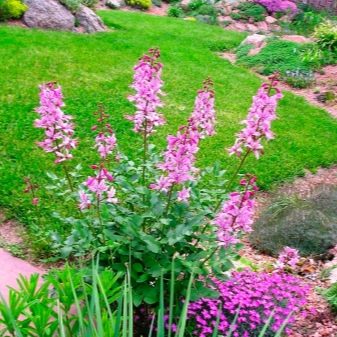








































































































The comment was sent successfully.